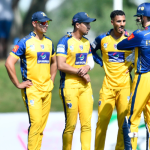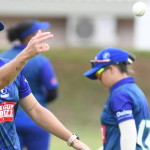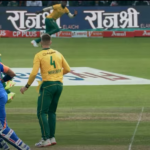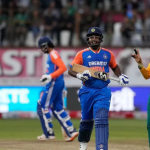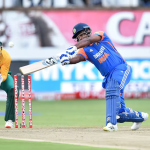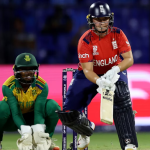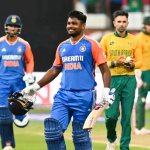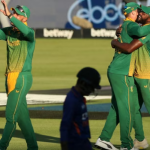South Africa VS Ireland men – SA Men win the toss and decided the first bat. Cricket is a sport that unites nations, and when South Africa and Ireland faced off in their latest match, fans worldwide eagerly anticipated an exciting and competitive game. The South Africa vs Ireland men’s cricket clash saw the Proteas, led by their seasoned captain, win the toss and make the crucial decision to bat first. This decision was expected to set the tone for the entire game, and cricket fans were ready for a thrilling encounter. This article provides a detailed look at the match, offering insights into the teams’ strategies, key performances, and critical moments that shaped the game.
Pre-Match Build-Up
Before diving into the events of the match, it’s essential to understand the importance of this contest. Both South Africa and Ireland have been striving to establish dominance in international cricket. For South Africa, a team with a rich history in the sport, every match presents an opportunity to assert their place among the world’s elite teams. On the other hand, Ireland, though relatively new to the top tier of international cricket, has shown remarkable growth and potential in recent years. Matches like this offer them a chance to challenge well-established teams like South Africa.
As the teams gathered for the toss, the weather conditions and pitch were closely analyzed. The captain winning the toss would have a significant tactical advantage, and on this day, South Africa emerged victorious in the coin toss, opting to bat first. This decision would be critical, as it could set the foundation for the rest of the game.
South Africa’s Decision to Bat First
Winning the toss in cricket offers a team the chance to dictate the pace of the game. South Africa’s decision to bat first was influenced by several factors. The pitch, known for offering support to batsmen in the early stages, coupled with sunny conditions, made it an ideal scenario for the Proteas to put up a solid total.
South Africa’s batting lineup has historically been one of its strengths. With star players like Quinton de Kock, Aiden Markram, and Rassie van der Dussen, they were confident of posting a formidable score. Batting first also allowed them to apply pressure on the Irish side, who would need to chase a potentially high target later in the match.
South Africa’s Strong Start
South Africa’s opening pair started the innings with a solid partnership. The opening batsmen displayed composure and confidence as they faced Ireland’s bowling attack. Early boundaries and strategic singles allowed South Africa to establish a steady run rate, building a platform for the middle order to exploit later in the innings.
Quinton de Kock, South Africa’s explosive wicket-keeper batsman, was in fine form. His ability to find gaps in the field and rotate the strike kept the scoreboard ticking. Partnering with him was Aiden Markram, known for his solid technique and ability to build an innings. Together, they frustrated the Irish bowlers by not offering many chances early on.
Ireland’s Response
Ireland, although on the back foot after losing the toss, responded with discipline in their bowling. Their pace attack, led by Mark Adair and Josh Little, aimed to capitalize on any mistakes made by the South African batsmen. Their bowling strategy focused on maintaining tight lines and lengths, preventing South Africa from accelerating too quickly.
However, despite Ireland’s best efforts, South Africa’s openers continued to build momentum. The Irish spinners were introduced into the attack to slow down the run rate, with Gareth Delany and Andy McBrine playing crucial roles in applying pressure during the middle overs.
South Africa’s Middle Order
After a strong opening partnership, South Africa’s middle order stepped in to maintain the momentum. Rassie van der Dussen, who has been a key player for South Africa in recent times, took charge of the innings. His ability to rotate the strike and hit the occasional boundary ensured that South Africa’s run rate remained healthy.
David Miller, South Africa’s explosive finisher, also played a pivotal role. His aggressive batting style allowed South Africa to accelerate in the latter stages of the innings. Miller’s contribution, along with that of Heinrich Klaasen, added vital runs to South Africa’s total, setting them up for a challenging target for Ireland to chase.
Ireland’s Fielding Efforts
Fielding is often a decisive factor in close matches, and Ireland’s efforts in the field were commendable. Their players made several crucial stops, saving valuable runs that could have significantly impacted the final total. However, a few missed opportunities, including dropped catches and misfields, allowed South Africa to add extra runs to their score.
The Irish fielding unit, led by captain Andrew Balbirnie, was sharp but not without fault. In high-pressure games like these, every run saved counts, and Ireland’s fielders worked tirelessly to keep South Africa’s total in check.
The Final Push
As the innings entered the final ten overs, South Africa looked to increase the scoring rate. The final overs of any cricket match are crucial, and South Africa’s batsmen were determined to capitalize on any loose deliveries. David Miller, in particular, unleashed his power-hitting abilities, sending several deliveries over the boundary.
Ireland’s bowlers struggled to contain the onslaught during the death overs. Despite trying different bowling variations, South Africa’s aggressive approach paid off, and they managed to post a formidable total on the scoreboard. By the end of their innings, South Africa had set Ireland a challenging target, one that would require a well-coordinated effort from the Irish batsmen to chase down.
Ireland’s Batting Response
With South Africa having set a daunting target, Ireland’s batsmen faced an uphill task. The Irish top order, consisting of players like Paul Stirling, Andrew Balbirnie, and Harry Tector, needed to get off to a strong start to stay in the game. The opening partnership was critical in building the foundation for the chase.
However, South Africa’s bowling attack, led by Kagiso Rabada and Anrich Nortje, was relentless. The Proteas pacers used their speed and accuracy to trouble the Irish batsmen, making scoring difficult. Rabada’s ability to swing the ball and Nortje’s express pace caused early damage, leaving Ireland’s top order in trouble.
South Africa’s Bowling Dominance
South Africa’s bowlers made early breakthroughs, putting Ireland on the back foot from the start. The dismissal of key players like Paul Stirling and Andrew Balbirnie within the first few overs created pressure on Ireland’s middle order. South Africa’s bowlers were disciplined in their approach, maintaining tight lines and lengths.
Spin was also introduced early into the attack, with Keshav Maharaj playing a crucial role in controlling the middle overs. Maharaj’s variations and ability to extract turn from the pitch kept Ireland’s batsmen guessing, further slowing down their scoring rate.
Ireland’s Middle Order Fightback
Despite the early setbacks, Ireland’s middle order attempted to stabilize the innings. Harry Tector and Curtis Campher played vital innings, adding runs and rebuilding Ireland’s hopes of staying in the game. Their partnership was critical in keeping Ireland’s chase alive, as they looked to rotate the strike and find gaps in South Africa’s fielding.
However, the mounting required run rate put additional pressure on Ireland’s batsmen, leading to risky shots and eventual dismissals. The loss of crucial wickets at regular intervals meant that Ireland’s chase began to falter.
South Africa’s Victory and Match Highlights
As the match progressed, it became clear that South Africa’s bowlers had taken control. With Ireland struggling to keep up with the required run rate and losing wickets consistently, the outcome seemed inevitable. South Africa’s disciplined bowling and strong fielding efforts ensured that they maintained their grip on the game.
In the end, South Africa secured a comfortable victory, successfully defending the target they had set earlier in the day. The Proteas’ comprehensive performance with both bat and ball proved too much for Ireland to handle.
Post-Match Analysis
South Africa’s win against Ireland was a result of solid team performance, from winning the toss to executing their game plan effectively. The decision to bat first allowed them to set a challenging total, while their bowlers did an excellent job of defending that target.
For Ireland, the match offered valuable lessons. While they showed moments of promise, particularly in their middle-order fightback, they struggled to cope with the pace and skill of South Africa’s bowlers. Their fielding, though commendable at times, left room for improvement, especially in terms of capitalizing on key opportunities.
Conclusion
South Africa’s victory against Ireland in this men’s cricket match highlighted the importance of winning the toss and making strategic decisions based on conditions. By choosing to bat first, South Africa set the tone for the game and leveraged their batting strength to post a competitive total. Their bowlers then backed up the batting performance by dismantling Ireland’s batting lineup with a disciplined and aggressive approach.

